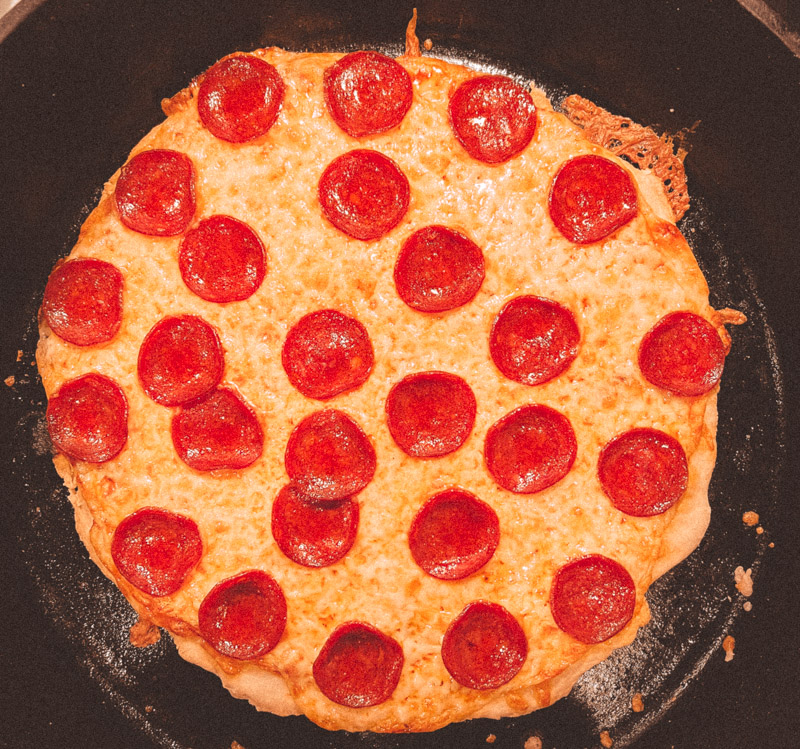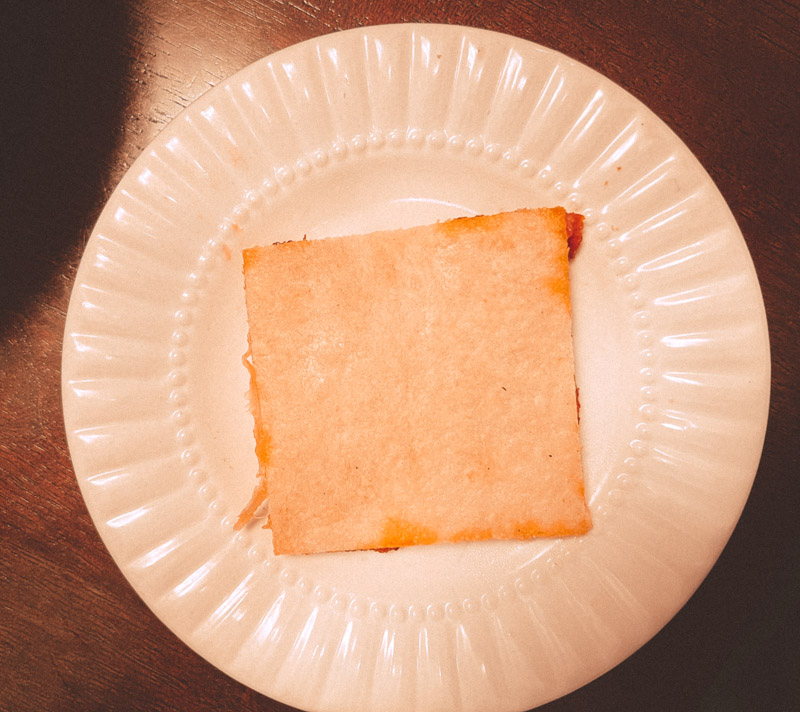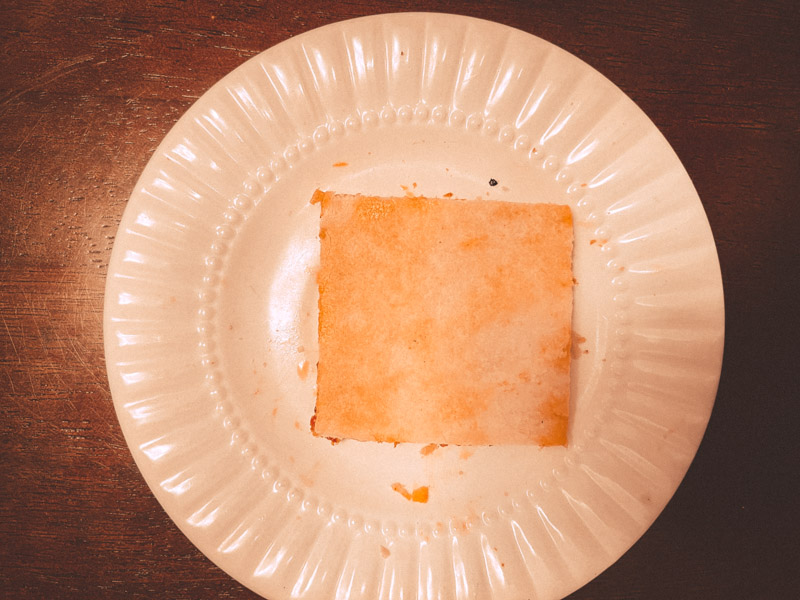Ratings, percentages, and more
rating: 5/8 slices

hydration: 52%

difficulty: easy

Ingredient percents
| Ingredient | Standard % | Baker’s % |
| Flour (227g)* | 60.21% | 100% |
| Salt (3g) | 0.79% | 1.32% |
| Baking Powder (5g)** | 1.33% | 2.2% |
| Water (118g) | 31.3% | 51.98% |
| Olive Oil (25g) | 6.63% | 11.01% |
**That’s not a typo — this recipe uses baking powder, not yeast.
This chart shows the standard ingredient percentages — how you’d normally calculate percentages — in the second column. For the standard percent, I added up all the ingredients and then divided that number by each individual ingredient and rounded to the second decimal (i.e. 567g flour / 1064g total = 53.29%) The third column shows the “baker’s percentage,” which this post explains well.
Summary
- Quickest start to finish pizza I’ve ever made
- No yeast (uses baking powder instead)
- Very thin crust
See King Arthur’s Recipe
My First Foray Into St. Louis Style Pizza

I’d never heard of St. Louis style pizza until I stumbled across it on a website claiming to list the top 50 pizza styles in the world. Reading about the style’s thin and crispy crust that’s cut into squares, reminded me of pizza I’d had in Austin, MN, which also had a very thin and crispy crust, lots of toppings, and is cut in squares. Could it be the same style? That question and the pizza’s uniqueness made me want to try it.
To avoid any suspense, after making this pizza, I can say that it’s not the same style (at least not this recipe’s version). The Minnesota version’s crust is significantly crisper, and, if I remember right, more layered. Still, this is an interesting pizza, unlike any I’ve had. I can’t say it’s my favorite, but I enjoyed it and being able to eat the pizza 30 minutes after starting the dough is a nice change, considering some pizzas require a day or more of advanced planning.
And, to be fair, I didn’t use the correct cheese combo, which sounds like a critical component to the experience. The pizza’s made in St. Louis, at places like Imo’s, use Provel cheese. Wikipedia describes Provel as, “a white processed cheese product particularly popular in St. Louis cuisine, that is a combination of cheddar, Swiss, and provolone cheeses.” Other recipes and discussions support the combination of cheeses, but Cecil Whittaker’s uses a “special blend of Cheddar, Colby, Swiss and Mozzarella.”*** So, that might be another reasonably authentic option. Either way, while I didn’t love this recipe, it got me interested enough to try other versions and to go for something closer to authentic.
***This may be because Imo's owns the distribution rights on Provel and Cecil's doesn't want to support a competitor. Or it may be that not everyone loves Provel, which a proclaimed lover of it described as, "melted plastic from the '80s."
A Unique Approach to Crust

I’ve never heard of a yeastless pizza crust, but that’s what this recipe calls for. Because the recipe uses baking powder for the leavening, there’s no waiting for the dough to rise — just mix the ingredients, roll out the dough, top, and bake. The resulting crust is more cracker like, fairly dense, with no chew, and reminded me of pie crust.
The recipe says you need to put the dough between parchment paper or plastic wrap when you roll it out. However, the dough didn’t seem very sticky to me, so I just rolled it out on the counter. I had no issues with sticking. (If there’s another reason the recipe calls for parchment paper, please put it in the comments.)
I baked the first pizza for 11 minutes, the top end of the range suggested in the recipe. Oh, and because my oven seems to run a little cool, I set it to 430 instead of 425. The crust came out pale and only crisp on the very edges.

Looking to improve my outcome, I baked the second one for longer — 15 minutes or so — until the cheese was bubbling all over and starting to brown. The second pizza also benefited from going into a preheated cast iron skillet, which was cold when I made the first one. As you’d expect, the second pizza’s crust came out much crisper.

I followed the recipe closely, except, I used a combo of Monterey Jack and mozzarella instead of the suggested Swiss, provolone, and cheddar. I also probably over topped a little, following the recommendation on the sauce amount but not the cheese.
A Lesson Learned
When given a cooking time, don’t worry about stopping on a dime. In the color of crust, instead, you should trust.
